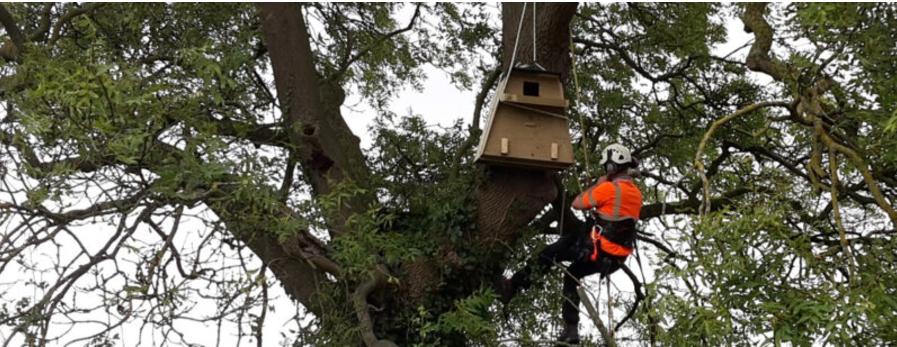Portbury Wharf Nature Reserve is a well-visited and much-loved nature reserve on the doorstep of Portishead. Visitors enjoy the wetland habitat, and variety of protected species including water voles, great crested newts and barn owls, as well as overwintering wildfowl and waders found on the pools and grazing marsh.
In April 2020, National Grid began work in the nature reserve to make changes to Western Power Distribution’s (WPD) local network to make way for the new high-voltage electricity line, featuring T-pylons. When complete, it will connect six million homes and businesses to low-carbon energy from Hinkley Point C and increase capacity on the network for renewable energy.
Work in the reserve to date has involved:
- installing new underground electricity cables to replace the line of WPD pylons running into Portishead substation from the south
- installing cable ducts to the east of Portishead substation, in preparation for installing new cables that’ll replace four existing pylons in this area – planned to be removed during 2022
- preparing the work areas for the construction of two new T-pylons.
All construction activity, including stringent measures to protect wildlife and habitats, is monitored by North Somerset Council. To avoid disturbance to wintering birds and other wildlife, we’ll return to the nature reserve from April 2022 to continue with our main construction activities.
Between April and September 2022, we will:
- finalise the underground cabling work and remove the four WPD pylons east of the substation
- complete the piling and building the foundations for the five new T-pylons to be constructed between Portbury One Hundred and Bristol Port Authority – two pylons within the reserve.
We will return to the reserve in early 2023 to clear vegetation, ahead of installing the wires between the T-pylons between April and September that year. The land will be fully reinstated in 2024.

We're removing the two lines of existing pylons owned by WPD
Access to and through the reserve
Access to the reserve during our work is being maintained but, to keep everyone safe, some footpaths will need to be closed for a short time. Construction traffic crosses Wharf Lane occasionally and is carefully managed by a controlled crossing.
Protecting local wildlife and habitats
To avoid disturbance to wintering birds and other wildlife, we only work in the reserve during certain months, which explains our presence over a number of years.
The main construction period is April to September, though North Somerset Council may permit activity such as vegetation removal and other minor works outside these dates.
This is just one of many measures in place to protect this sensitive environment, which were agreed during consultation after thorough ecological surveys. So far as part of the project, we have:
- installed four new barn owl boxes
- protected mature oak trees by diverting the original haul road route
- saved and translocated over 300 great crested newts, over 340 toads, 600 smooth newts, and 5 palmate newts (only recorded once before in the reserve)
- installed specialised fencing and cleared vegetation to prevent protected species from entering the construction areas
- created new habitats for water voles.

Our team has built four new designated barn owl boxes in the reserve
We’ve installed new fencing along Wharf Lane and erected a permanent information notice board, along with a finger directional signpost, along with improving the seasonal footpath and removed diseased elm trees at the request of the council.

We've installed temporary fencing to prevent protected species from entering our construction areas.
The project team has proactively helped to keep the reserve clean and free of rubbish by coordinating regular litter picks. We also helped rescue and relocate the popular splash sculpture to Swan Lake at the Ecology Park.
This is a great example of partnership working between North Somerset Council and National Grid and helps improve the site for all. We hope these new features will enhance the enjoyment of people in the reserve and help them navigate and explore the many paths in the reserve.